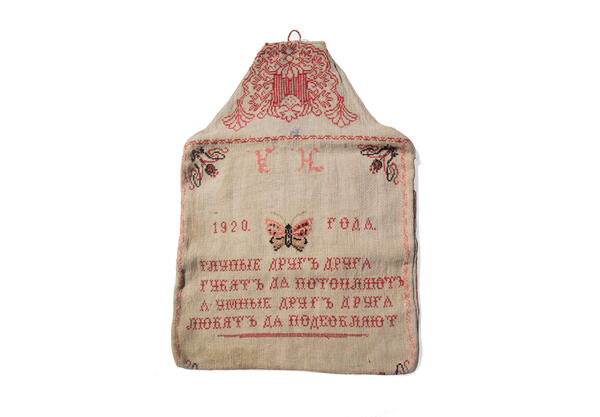By the end of the 19th century, the population of the Russian Empire was poorly literate. As of 1897, only 21 percent of the Russian citizens were literate. In Siberia, this rate amounted to 12 percent, and in Central Asia 一 just five.
In 1920, the Council of People’s Commissars adopted a decree on establishing the Extraordinary Commission for the Liquidation of Illiteracy. The special Commission was organized for its implementation. In the 1920—1930-s, its members supervised the training of illiterates and semi-literate people. The People’s Commissar of Education Anatoly Lunacharsky headed the Commission.
To liquidate illiteracy, it was necessary to prepare the teachers. By the fall of 1920, teaching training courses opened in twenty-six governorates thanks to the Commission.
In each settlement, where there were more than 15 illiterate residents, the so-called literacy school 一 likpunkt, or illiteracy liquidation point, was to work. The training period in such a school was 3-4 months. The study program included reading, writing, and counting.
In the early 1920s, the Commission specified that these studies aimed to teach citizens to read clear type and written texts, make short notes they needed in life and at work, read and write whole and fractional numbers and percentages, understand diagrams and schemes. The main points of the Soviet ideology were also explained to the students.
In 1922, the First All-Russian Congress on the Liquidation of Illiteracy was held. It decided that it was necessary first to teach literacy to the Red Army soldiers, conscripts, workers of state farms, members of trade unions, Komsomol members, and members of rural collective associations at the age of 18 to 30 years old.
Teaching the illiterate at the likpunkts lasted for seven months, and half-educated — up to six months. People had to study 6 –8 hours a week.
Likpunkts were supplied with textbooks and writing instruments of good quality. The working day was reduced for adult students, while the wages remained the same. These points were very productive. According to the census of 1939, 90 percent of the people at the age of 16 to 50 were literate.
The ‘Peter the Great’s Siberian City’ displays school supplies from the 1920s, including a student bag.
In 1920, the Council of People’s Commissars adopted a decree on establishing the Extraordinary Commission for the Liquidation of Illiteracy. The special Commission was organized for its implementation. In the 1920—1930-s, its members supervised the training of illiterates and semi-literate people. The People’s Commissar of Education Anatoly Lunacharsky headed the Commission.
To liquidate illiteracy, it was necessary to prepare the teachers. By the fall of 1920, teaching training courses opened in twenty-six governorates thanks to the Commission.
In each settlement, where there were more than 15 illiterate residents, the so-called literacy school 一 likpunkt, or illiteracy liquidation point, was to work. The training period in such a school was 3-4 months. The study program included reading, writing, and counting.
In the early 1920s, the Commission specified that these studies aimed to teach citizens to read clear type and written texts, make short notes they needed in life and at work, read and write whole and fractional numbers and percentages, understand diagrams and schemes. The main points of the Soviet ideology were also explained to the students.
In 1922, the First All-Russian Congress on the Liquidation of Illiteracy was held. It decided that it was necessary first to teach literacy to the Red Army soldiers, conscripts, workers of state farms, members of trade unions, Komsomol members, and members of rural collective associations at the age of 18 to 30 years old.
Teaching the illiterate at the likpunkts lasted for seven months, and half-educated — up to six months. People had to study 6 –8 hours a week.
Likpunkts were supplied with textbooks and writing instruments of good quality. The working day was reduced for adult students, while the wages remained the same. These points were very productive. According to the census of 1939, 90 percent of the people at the age of 16 to 50 were literate.
The ‘Peter the Great’s Siberian City’ displays school supplies from the 1920s, including a student bag.



